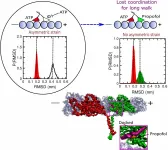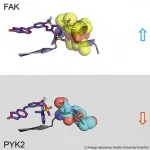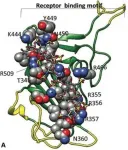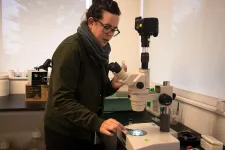Episodic exhumation of the Appalachian orogen in the Catskill Mountains (New York State, USA)
Chilisa M. Shorten; Paul G. Fitzgerald Abstract: Increasing evidence indicates the eastern North American passive margin has not remained tectonically quiescent since Jurassic continental breakup. The identification, timing, resolution, and significance of post-orogenic exhumation, notably an enigmatic Miocene event, are debated. We add insight by constraining the episodic cooling and exhumation history of the Catskill Mountains (New York, USA) utilizing apatite fission-track thermochronology and apatite (U-Th)/He data from a ~1 km vertical profile. Multi-kinetic inverse thermal modeling constrains three phases of cooling: Early Jurassic to Early Cretaceous (1-3 °C/m.y.), Early Cretaceous to early Miocene (~0.5 °C/m.y.), and since Miocene times (1-2 °C/m.y.). Previous thermochronologic studies were unable to verify late-stage cooling and/or exhumation (typically post-Miocene and younger) because late-stage cooling was commonly a spurious artifact of earlier mono-kinetic annealing algorithms. Episodic cooling phases are correlative with rifting, passive-margin development, and drainage reorganization causing landscape rejuvenation. Geomorphologic documentation of increased offshore mid-Atlantic sedimentation rates and onshore erosion support the documented accelerated Miocene cooling and exhumation. View article: https://pubs.geoscienceworld.org/gsa/geology/article-abstract/doi/10.1130/G48011.1/594234/Episodic-exhumation-of-the-Appalachian-orogen-in
A new model for the optimal structural context for giant porphyry copper deposit formation
José Piquer; Pablo Sanchez-Alfaro; Pamela Pérez-Flores Abstract: Porphyry-type deposits are the main global source of copper and molybdenum. An improved understanding of the most favorable structural settings for the emplacement of these deposits is necessary for successful exploration, particularly considering that most future discoveries will be made under cover based on conceptual target generation. A common view is that porphyry deposits are preferentially emplaced in pull-apart basins within strike-slip fault systems that favor local extension within a regional compressive to transpressive tectonic regime. However, the role of such a structural context in magma storage and evolution in the upper crust remains unclear. In this work, we propose a new model based on the integration of structural data and the geometry of magmatic-hydrothermal systems from the main Andean porphyry Cu-Mo metallogenic belts and from the active volcanic arc of southern Chile. We suggest that the magma differentiation and volatile accumulation required for the formation of a porphyry deposit is best achieved when the fault system controlling magma ascent is strongly misoriented for reactivation with respect to the prevailing stress field. When magmas and fluids are channeled by faults favorably oriented for extension (approximately normal to σ3), they form sets of parallel, subvertical dikes and veins, which are common both during the late stages of the evolution of porphyry systems and in the epithermal environment. This new model has direct implications for conceptual mineral exploration. View article: https://pubs.geoscienceworld.org/gsa/geology/article/doi/10.1130/G48287.1/594235/A-new-model-for-the-optimal-structural-context-for
A new model for the growth of normal faults developed above pre-existing structures
Emma K. Bramham; Tim J. Wright; Douglas A. Paton; David M. Hodgson Abstract: Constraining the mechanisms of normal fault growth is essential for understanding extensional tectonics. Fault growth kinematics remain debated, mainly because the very earliest phase of deformation through recent syn-kinematic deposits is rarely documented. To understand how underlying structures influence surface faulting, we examined fault growth in a 10 ka magmatically resurfaced region of the Krafla fissure swarm, Iceland. We used a high-resolution (0.5 m) digital elevation model derived from airborne lidar to measure 775 fault profiles with lengths ranging from 0.015 to 2 km. For each fault, we measured the ratio of maximum vertical displacement to length (Dmax/L) and any nondisplaced portions of the fault. We observe that many shorter faults (200 m) are vertically displaced along most of their surface length and have Dmax/L at the upper end of the global population for comparable lengths. We hypothesize that faults initiate at the surface as fissure-like fractures in resurfaced material as a result of flexural stresses caused by displacements on underlying faults. Faults then accrue vertical displacement following a constant-length model, and grow by dip and strike linkage or lengthening when they reach a bell-shaped displacement-length profile. This hybrid growth mechanism is repeated with deposition of each subsequent syn-kinematic layer, resulting in a remarkably wide distribution of Dmax/L. Our results capture a specific early period in the fault slip-deposition cycle in a volcanic setting that may be applicable to fault growth in sedimentary basins. View article: https://pubs.geoscienceworld.org/gsa/geology/article-abstract/doi/10.1130/G48290.1/594236/A-new-model-for-the-growth-of-normal-faults
Geochemical evidence of tropical cyclone controls on shallow-marine sedimentation (Pliocene, Taiwan)
Shahin E. Dashtgard; Ludvig Löwemark; Pei-Ling Wang; Romy A. Setiaji; Romain Vaucher Abstract: Shallow-marine sediment typically contains a mix of marine and terrestrial organic material (OM). Most terrestrial OM enters the ocean through rivers, and marine OM is incorporated into the sediment through both suspension settling of marine plankton and sediment reworking by tides and waves under fair-weather conditions. River-derived terrestrial OM is delivered year-round, although sediment and OM delivery from rivers is typically highest during extreme weather events that impact river catchments. In Taiwan, tropical cyclones (TCs) are the dominant extreme weather event, and 75% of all sediment delivered to the surrounding ocean occurs during TCs. Distinguishing between sediment deposited during TCs and that redistributed by tides and waves during fair-weather conditions can be approximated using δ13Corg values and C:N ratios of OM. Lower Pliocene shallow-marine sedimentary strata in the Western Foreland Basin of Taiwan rarely exhibit physical evidence of storm-dominated deposition. Instead they comprise completely bioturbated intervals that transition upward into strata dominated by tidally generated sedimentary structures, indicating extensive sediment reworking under fair-weather conditions. However, these strata contain OM that is effectively 100% terrestrial OM in sediment that accumulated in estimated water depths 70 m.y.) Arago and Macdonald hotspot tracks. View article: https://pubs.geoscienceworld.org/gsa/geology/article-abstract/doi/10.1130/G48276.1/593943/Missing-links-for-the-long-lived-Macdonald-and
A detrital zircon test of large-scale terrane displacement along the Arctic margin of North America
Timothy M. Gibson; Karol Faehnrich; James F. Busch; William C. McClelland; Mark D. Schmitz ... Abstract: Detrital zircon U-Pb geochronology is one of the most common methods used to constrain the provenance of ancient sedimentary systems. Yet, its efficacy for precisely constraining paleogeographic reconstructions is often complicated by geological, analytical, and statistical uncertainties. To test the utility of this technique for reconstructing complex, margin-parallel terrane displacements, we compiled new and previously published U-Pb detrital zircon data (n = 7924; 70 samples) from Neoproterozoic-Cambrian marine sandstone-bearing units across the Porcupine shear zone of northern Yukon and Alaska, which separates the North Slope subterrane of Arctic Alaska from northwestern Laurentia (Yukon block). Contrasting tectonic models for the North Slope subterrane indicate it originated either near its current position as an autochthonous continuation of the Yukon block or from a position adjacent to the northeastern Laurentian margin prior to >1000 km of Paleozoic-Mesozoic translation. Our statistical results demonstrate that zircon U-Pb age distributions from the North Slope subterrane are consistently distinct from the Yukon block, thereby supporting a model of continent-scale strike-slip displacement along the Arctic margin of North America. Further examination of this dataset highlights important pitfalls associated with common methodological approaches using small sample sizes and reveals challenges in relying solely on detrital zircon age spectra for testing models of terranes displaced along the same continental margin from which they originated. Nevertheless, large-n detrital zircon datasets interpreted within a robust geologic framework can be effective for evaluating translation across complex tectonic boundaries. View article: https://pubs.geoscienceworld.org/gsa/geology/article-abstract/doi/10.1130/G48336.1/593944/A-detrital-zircon-test-of-large-scale-terrane
Quantitative reconstruction of pore-pressure history in sedimentary basins using fluid escape pipes
Joe Cartwright; Chris Kirkham; Martino Foschi; Neil Hodgson; Karyna Rodriguez ... Abstract: We present a novel method to reconstruct the pressure conditions responsible for the formation of fluid escape pipes in sedimentary basins. We analyzed the episodic venting of high-pressure fluids from the crests of a large anticlinal structure that formed off the coast of Lebanon in the past 1.7 m.y. In total, 21 fluid escape pipes formed at intervals of 50-100 k.y. and transected over 3 km of claystone and evaporite sealing units to reach the seabed. From fracture criteria obtained from nearby drilling, we calculated that overpressures in excess of 30 MPa were required for their formation, with pressure recharge of up to 2 MPa occurring after each pipe-forming event, resulting in a sawtooth pressure-time evolution. This pressure-time evolution is most easily explained by tectonic overpressuring due to active folding of the main source aquifer while in a confined geometry. View article: https://pubs.geoscienceworld.org/gsa/geology/article-abstract/doi/10.1130/G48406.1/593946/Quantitative-reconstruction-of-pore-pressure
INFORMATION:
GEOLOGY articles are online at http://geology.geoscienceworld.org/content/early/recent. Representatives of the media may obtain complimentary articles by contacting Kea Giles at the e-mail address above. Please discuss articles of interest with the authors before publishing stories on their work, and please make reference to GEOLOGY in articles published. Non-media requests for articles may be directed to GSA Sales and Service, gsaservice@geosociety.org.
https://www.geosociety.org





